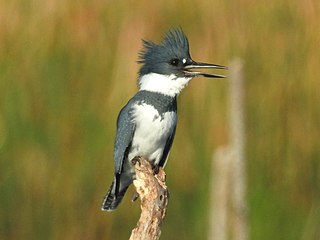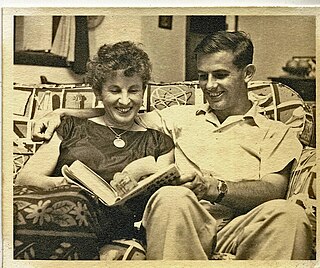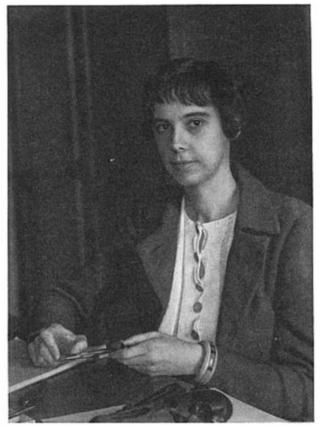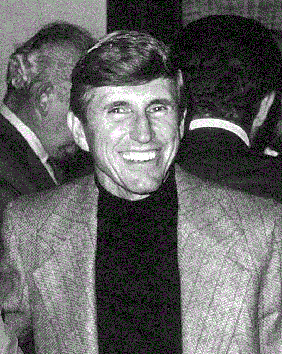
The belted kingfisher is a large, conspicuous water kingfisher, native to North America. All kingfishers are placed in one family, Alcedinidae, and recent research suggests that this should be divided into three subfamilies.

The American Ornithological Society (AOS) is an ornithological organization based in the United States. The society was formed in October 2016 by the merger of the American Ornithologists' Union (AOU) and the Cooper Ornithological Society. Its members are primarily professional ornithologists, although membership is open to anyone with an interest in birds. The society publishes the two scholarly journals, Ornithology and Ornithological Applications as well as the AOS Checklist of North American Birds. The American Ornithological Society claims the authority to establish standardized English bird names throughout North and South Americas.

Joel Asaph Allen was an American zoologist, mammalogist, and ornithologist. He became the first president of the American Ornithologists' Union, the first curator of birds and mammals at the American Museum of Natural History, and the first head of that museum's Department of Ornithology. He is remembered for Allen's rule, which states that the bodies of endotherms vary in shape with climate, having increased surface area in hot climates to lose heat, and minimized surface area in cold climates, to conserve heat.

Ornithology, formerly The Auk and The Auk: Ornithological Advances, is a peer-reviewed scientific journal and the official publication of the American Ornithological Society (AOS). It was established in 1884 and is published quarterly. The journal covers the anatomy, behavior, and distribution of birds. It was named for the great auk, the symbol of the AOS.

Joseph Grinnell was an American field biologist and zoologist. He made extensive studies of the fauna of California, and is credited with introducing a method of recording precise field observations known as the Grinnell System. He served as the first director of the Museum of Vertebrate Zoology at the University of California, Berkeley from the museum's inception in 1908 until his death.
J. Michael Scott is an American scientist, professor, environmentalist and author.

Witmer Stone was an American ornithologist, botanist, and mammalogist, and was considered one of the last of the “great naturalists.” Stone is remembered principally as an ornithologist. He was president of the American Ornithologists’ Union (AOU) 1920–23, and was editor of the AOU's periodical The Auk 1912–1936. He spearheaded the production of the 4th edition of the AOU checklist, published in 1931. He worked for over 50 years in the Ornithology Department at the Academy of Natural Sciences of Philadelphia, eventually serving as Director of the institution. Stone was one of the founding members of the Delaware Valley Ornithological Club (DVOC) in 1890 and was actively involved in the organization for the remainder of his life. Stone was one of only two scientists to serve as president of both the AOU and the American Society of Mammalogists, and he co-authored two popular books about mammals. His outstanding botanical contribution was The Plants of Southern New Jersey, published in 1911. Stone spent many summers at Cape May, New Jersey, summering there annually starting in 1916. He is best remembered for his two-volume classic Bird Studies at Old Cape May, which was published by the DVOC in 1937, two years before his death.

David William Snow was an English ornithologist born in Windermere, Westmorland.
The Cooper Ornithological Society (COS), formerly the Cooper Ornithological Club, was an American ornithological society. It was founded in 1893 in California and operated until 2016. Its name commemorated James Graham Cooper, an early California biologist. It published the ornithological journal The Condor and the monograph series Studies in Avian Biology. It presented the annual Loye and Alden Miller Research Award, which is given for lifetime achievement in ornithological research and was a member of the Ornithological Council.

Richard Charles Banks was an American author, ornithologist and Emeritus Research Zoologist on staff with the Patuxent Wildlife Research Center run by the U.S. Geological Survey and stationed at the Smithsonian Institution in Washington, D.C. He is the founder of the Ornithological Council and known for his study of the migratory systems, patterns, and geographic variations of North American birds, primarily focusing on the research and analysis of Greater White-fronted Geese.

Hildegarde Howard was an American pioneer in paleornithology. She was mentored by the famous ornithologist, Joseph Grinnell, at the Museum of Vertebrate Zoology (MVZ) and in avian paleontology. She was well known for her discoveries in the La Brea Tar Pits, among them the Rancho La Brea eagles. She discovered and described Pleistocene flightless waterfowl at the prehistoric Ballona wetlands of coastal Los Angeles County at Playa del Rey. In 1953, Howard became the third woman to be awarded the Brewster Medal. She was the first woman president of the Southern California Academy of Sciences. Hildegarde wrote 150 papers throughout her career.

Laurence Markham Huey (1892–1963) was an American zoologist and the Curator of Birds and Mammals at the San Diego Natural History Museum from 1923 to 1961. His main research field was the study of mammals and birds of California and Baja California. He also did field work on mammals and birds in Utah and Arizona, in particular at the Organ Pipe Cactus National Monument.

Alden Holmes Miller was an American ornithologist and director of the Museum of Vertebrate Zoology at the University of California, Berkeley for 25 years. He published over 250 papers on the biology, distribution, and taxonomy of birds, and served as president of the American Ornithologists' Union (1953-1955) and the International Commission on Zoological Nomenclature (1964-1965), and as editor of The Condor from 1939 until his death. He was a member of the National Academy of Sciences.

William Harroun Behle was an American ornithologist from Utah. He published around 140 papers on the biogeography and taxonomy of birds, focusing largely on birds of the Great Basin. Behle was born in Salt Lake City, the second of three children of parents Augustus Calvin Behle, a surgeon, and Daisy May Behle. He studied at the University of Utah, earning a B.A. in 1932 and M.A. in 1933, then pursued doctoral work at the University of California, Berkeley, under Joseph Grinnell, earning a PhD in 1937. Aside from four summers as a naturalist at Grand Canyon National Park, Behle spent the majority of his career as a professor at the University of Utah, where he worked from 1937 until his retirement in 1977, and continued to perform research as professor and curator emeritus. Behle was a fellow of the American Ornithologists' Union and American Association for the Advancement of Science, president (1972–1974) of the Cooper Ornithological Society, and member of the Wilson Ornithological Society. He is commemorated in the scientific name of a tarantula species, Aphonopelma behlei named by his colleague Ralph V. Chamberlin in 1940.

Chester Barlow was an American cashier and amateur ornithologist who worked in California. He served as the secretary of the Cooper Ornithological Club and he encouraged others to publish in its bulletin on aspects of breeding of the local birds. He also served as the editor for the journals Oologist, The Nidiologist and The Condor.

Lynds Jones was an American naturalist, professor and a pioneer in the field of animal ecology. He introduced academic courses in ornithology and ecology at Oberlin College where he taught for many years. Jones was also the founding editor of the Wilson Bulletin produced by the Wilson Ornithological Club of which he was a member from its inception in 1888.
Walter Kenrick Fisher was an American zoologist, evolutionary biologist, illustrator, and painter. He taught in Stanford University before eventually becoming Emeritus Professor in Zoology until his retirement in 1943. Fisher was the son of ornithologist Albert Kenrick Fisher.

Thomas Raymond Howell was an American ornithologist. He was a fellow of the American Ornithological Union from 1959 until his death, and was president of it from 1982 to 1984. He was a prominent figure in ornithology during the latter part of the 20th century.

Bird Names for Birds is a campaign to change the common names of American birds named after people, and to redress the recognition in ornithology of figures with racist or colonial pasts. Launched in June 2020 by ornithologists Jordan E. Rutter and Gabriel Foley with a public petition, in the midst of the George Floyd protests and in the aftermath of an incident in Central Park that paved the way to Black Birders Week, the movement emerged after several years of social activism by multiple American ornithologists and birders, many of whom are not affiliated with Bird Names for Birds but remain devoted to the cause. The inaugural petition, dated June 22, 2020, and co-signed by 182 individuals, urged the American Ornithological Society (AOS) to "acknowledge the issue of eponymous and honorific common names, to outline a plan to change harmful common names, and to prioritize the implementation of this plan". In 2023, the AOS formally announced that it would change all English-language bird names that are named directly after people.
James Roger King (1927–1991) was an American ornithologist, specializing in avian physiology.
















